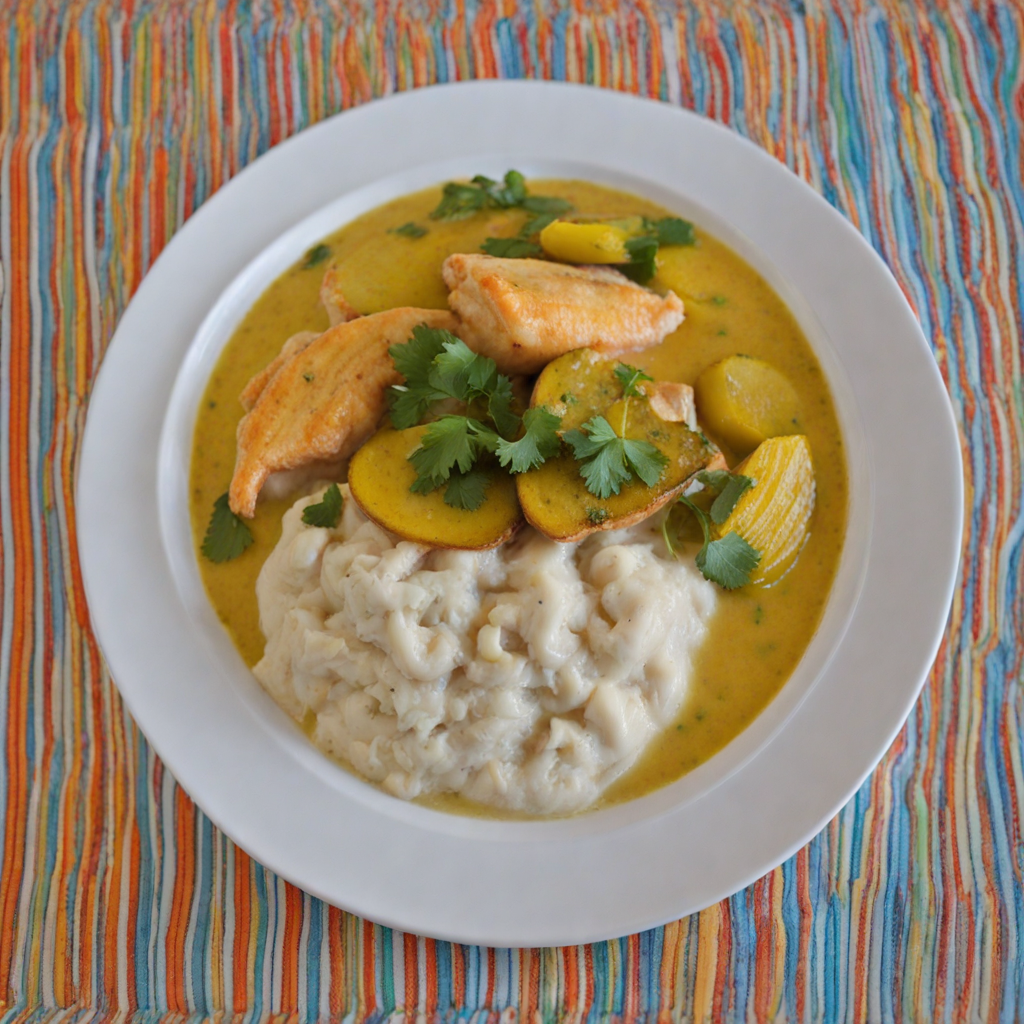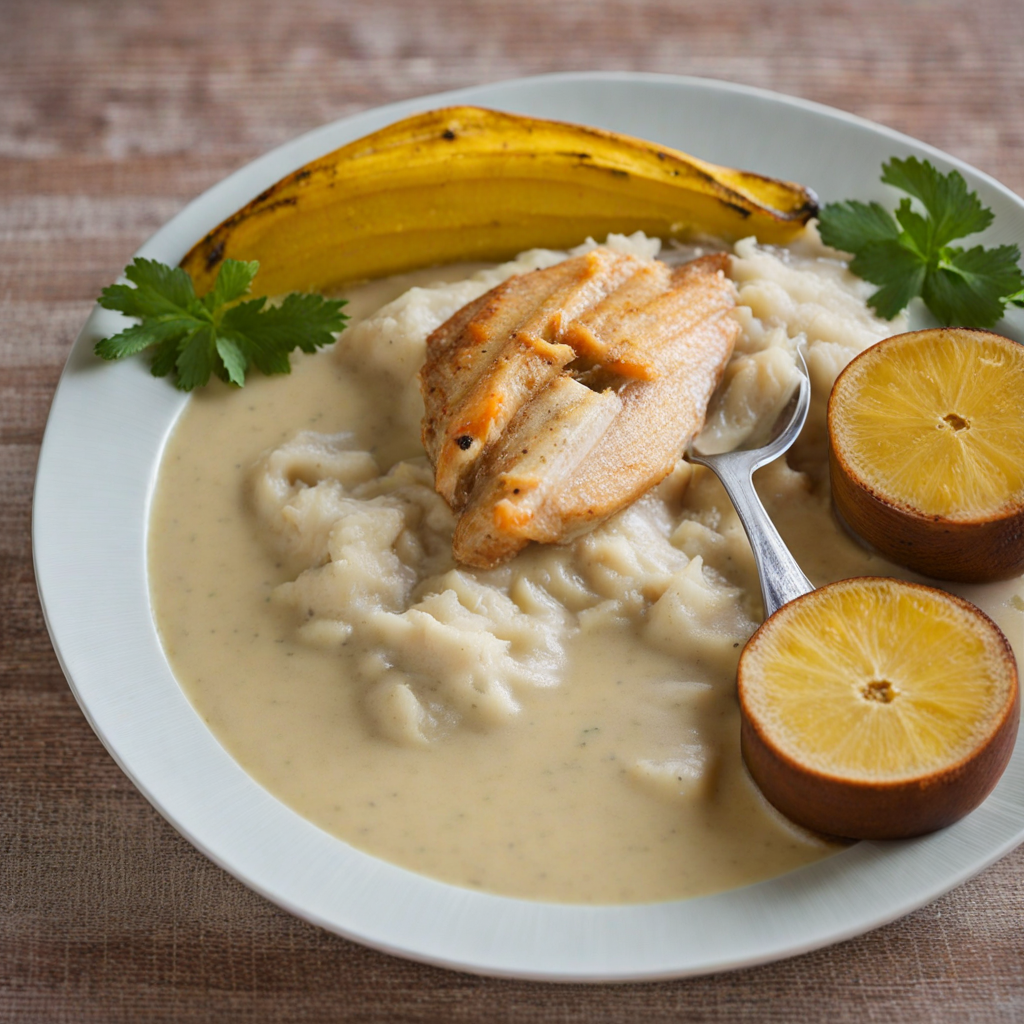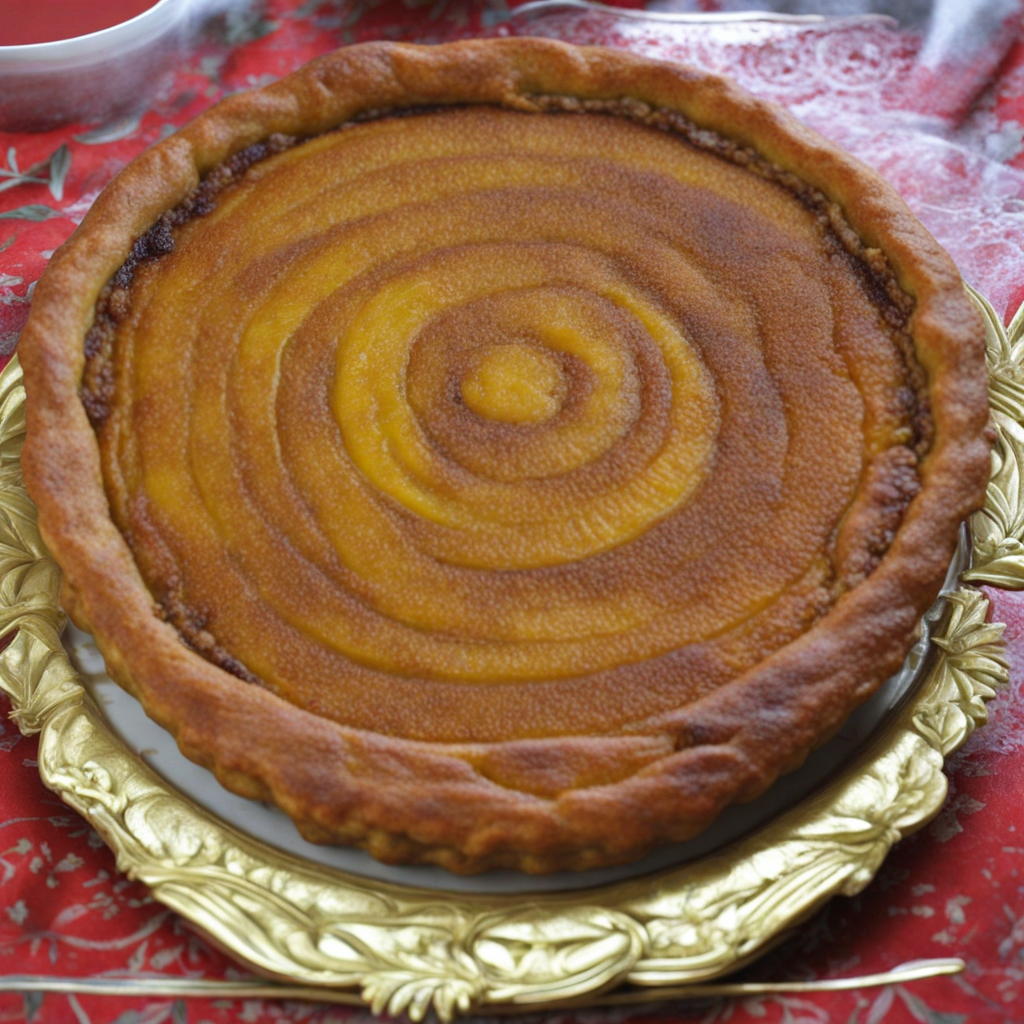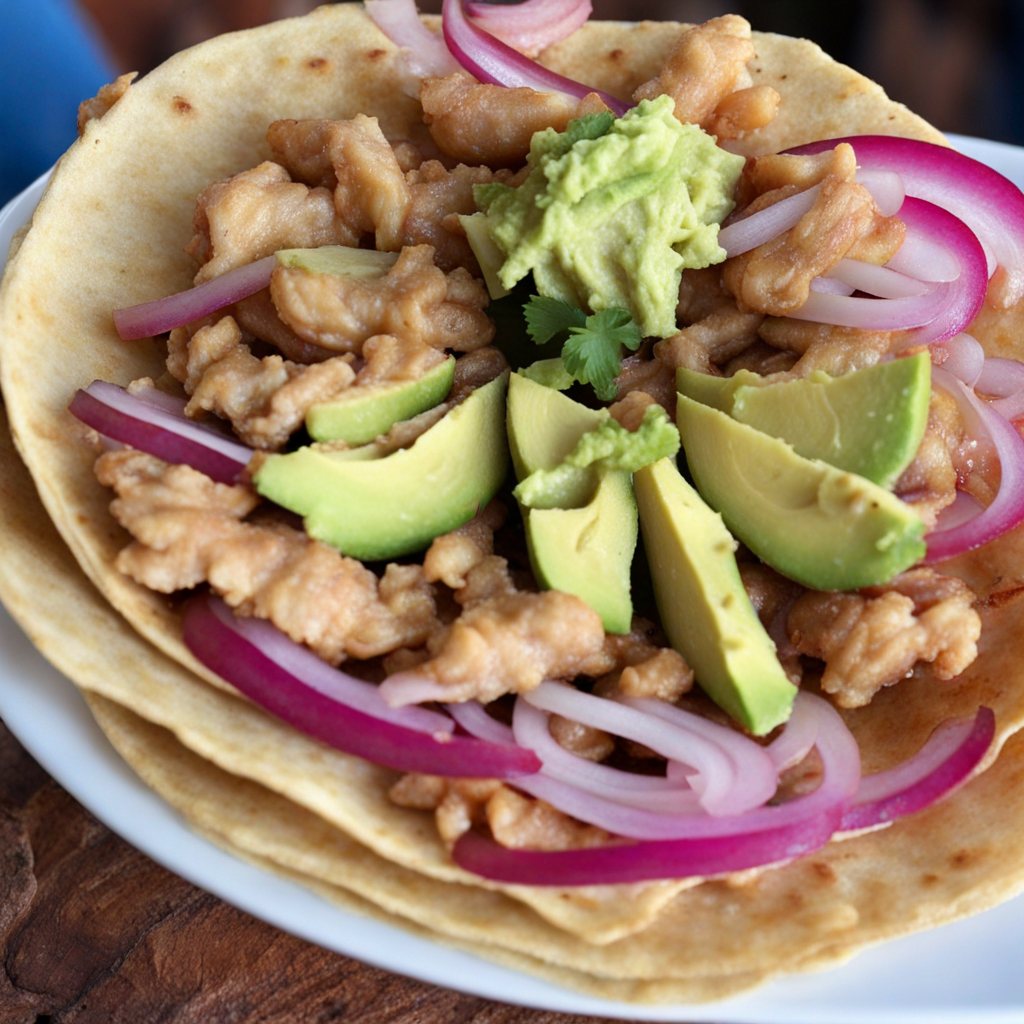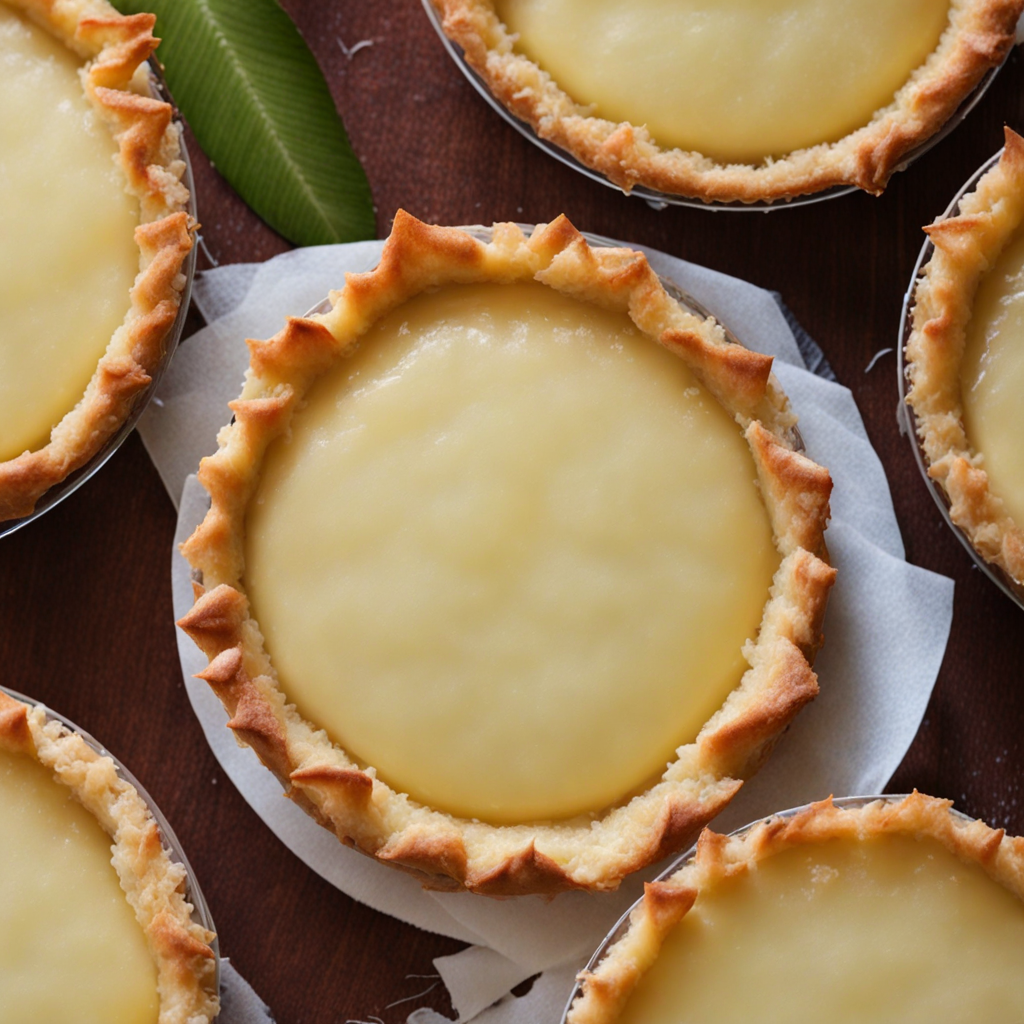Hudut
Hudut is a traditional dish from the Garifuna culture in Belize, showcasing a beautiful blend of flavors and techniques that reflect the region's rich culinary heritage. At its core, Hudut is a hearty fish stew served with a side of mashed plantains, or "fufu." The fish, typically snapper or grouper, is simmered in a flavorful broth infused with coconut milk, garlic, and a variety of spices, including cilantro and pepper. The result is a comforting and aromatic dish that highlights the freshness of the ingredients, making it a favorite among locals and visitors alike. What sets Hudut apart is the preparation of the plantains, which are boiled and then pounded until they reach a smooth, stretchy consistency. This starchy side complements the rich, creamy fish stew perfectly, creating a satisfying contrast of textures. The fufu is often shaped into balls or served in a mound on the plate, ready to be dipped into the savory broth. The dish is often garnished with fresh herbs and sometimes a squeeze of lime, adding a zesty brightness that elevates the overall flavor profile. Eating Hudut is not just about savoring a meal; it’s an experience that connects you to the vibrant culture of the Garifuna people. Traditionally, this dish is shared among family and friends, embodying a sense of community and celebration. Whether enjoyed at a local eatery or made at home, Hudut invites you to explore the unique tastes of Belizean cuisine, showcasing the beautiful interplay of coastal ingredients and traditional cooking methods.
How It Became This Dish
The History of Hudut: A Culinary Gem of Belize Hudut, a traditional dish from Belize, is a remarkable reflection of the country’s rich cultural tapestry and culinary evolution. This savory meal, which features a combination of fish stew and mashed plantains, encapsulates the diverse influences that have shaped Belizean cuisine over centuries. Understanding the origins, cultural significance, and development of Hudut offers a glimpse into the heart of Belize's culinary heritage. #### Origins: A Melting Pot of Cultures The story of Hudut begins with the indigenous Maya, who inhabited present-day Belize long before European contact. The Maya cultivated a variety of staple foods, including maize, beans, and plantains, which formed the foundation of their diet. Plantains, in particular, have been a vital source of carbohydrates and are indigenous to Central America. The arrival of the Garifuna people in the late 18th century marked a significant turning point in the culinary landscape of Belize. The Garifuna are descendants of the Arawak and Carib peoples who intermingled with shipwrecked Africans. Their culture, language, and cuisine reflect this unique ancestry. The Garifuna brought with them a wealth of culinary traditions, including the use of cassava, yams, and various fish species, which greatly influenced the local food scene. Hudut is believed to have originated from the Garifuna community, who adapted traditional methods of cooking fish to include the use of plantains. The dish is often prepared with fresh fish, such as snapper or grouper, simmered in a flavorful coconut milk broth, and served alongside a mash of boiled plantains. The combination of these ingredients not only showcases the region’s natural bounty but also reflects the Garifuna's deep connection to the sea and land. #### Cultural Significance: A Symbol of Identity Hudut is more than just a meal; it serves as a cultural symbol for the Garifuna people and their resilience. The dish is deeply intertwined with Garifuna identity, embodying their history and traditions. In Garifuna communities, Hudut is often prepared during significant celebrations, family gatherings, and communal events, reinforcing a sense of belonging and cultural pride. The preparation of Hudut is also a communal activity, often involving family members working together to create the dish. This practice fosters intergenerational bonds and ensures the transmission of culinary knowledge and traditions. The Garifuna people believe that the act of cooking together strengthens familial ties and preserves their cultural heritage. Moreover, Hudut is recognized as a dish that encourages sharing and hospitality. It is common for families to prepare large quantities of Hudut to serve guests, reflecting the Garifuna value of community and togetherness. This emphasis on sharing food is a hallmark of Belizean culture, where meals often serve as a backdrop for social interactions and storytelling. In recent years, the Garifuna have gained international recognition for their cultural contributions, and Hudut has become a symbol of this awareness. The dish is often featured in culinary festivals and cultural events, allowing wider audiences to appreciate its significance and the stories behind it. The 2001 recognition of the Garifuna as a Masterpiece of the Oral and Intangible Heritage of Humanity by UNESCO further solidified their cultural importance, with Hudut standing out as a culinary emblem of their heritage. #### Development Over Time: Adaptation and Evolution As Belize has evolved, so too has Hudut. The dish has adapted to incorporate a variety of influences, reflecting the country’s multicultural society. While the traditional Garifuna version remains popular, modern interpretations and variations have emerged, allowing for creative experimentation while still honoring the dish's roots. In urban areas, chefs and home cooks have begun to innovate with Hudut, introducing new ingredients and techniques. For instance, while the classic recipe uses fresh fish and coconut milk, some variations now include seafood blends or even chicken for those who prefer different proteins. Additionally, the use of spices and herbs has expanded, allowing for a broader flavor profile that appeals to contemporary palates. Hudut has also found its way onto the menus of restaurants in Belize, where it is often presented alongside other traditional dishes. This shift has helped to elevate the dish, introducing it to both locals and tourists alike. Food tourism has played a crucial role in this development, as visitors seek authentic Belizean experiences through its cuisine. As a result, Hudut has become a beloved dish for many, transcending its origins and becoming a staple in the broader Belizean culinary landscape. Furthermore, the global interest in sustainable and local food practices has revived traditional methods of fishing and farming, benefiting the preparation of Hudut. As chefs focus on sourcing fresh, local ingredients, the dish embodies the principles of sustainability, connecting eaters to the land and sea that nourished it. #### Conclusion: The Legacy of Hudut Hudut is more than just a meal; it is a testament to the resilience, creativity, and communal spirit of the Garifuna people and Belize as a whole. Its origins in indigenous and Afro-Caribbean traditions intertwine to create a dish that tells a story of cultural exchange, adaptation, and pride. As Hudut continues to evolve, it remains a beloved symbol of identity and community in Belize, inviting both locals and visitors to partake in its rich history and enjoy its delicious flavors. In a world where culinary traditions are often lost to globalization, Hudut stands as a vibrant reminder of the importance of preserving cultural heritage through food. Each bowl of Hudut served is a celebration of history, identity, and the enduring connections that bind people together through the shared experience of a meal. As Belize continues to embrace its diverse culinary landscape, Hudut will undoubtedly remain a cornerstone of its gastronomic heritage for generations to come.
You may like
Discover local flavors from Belize


